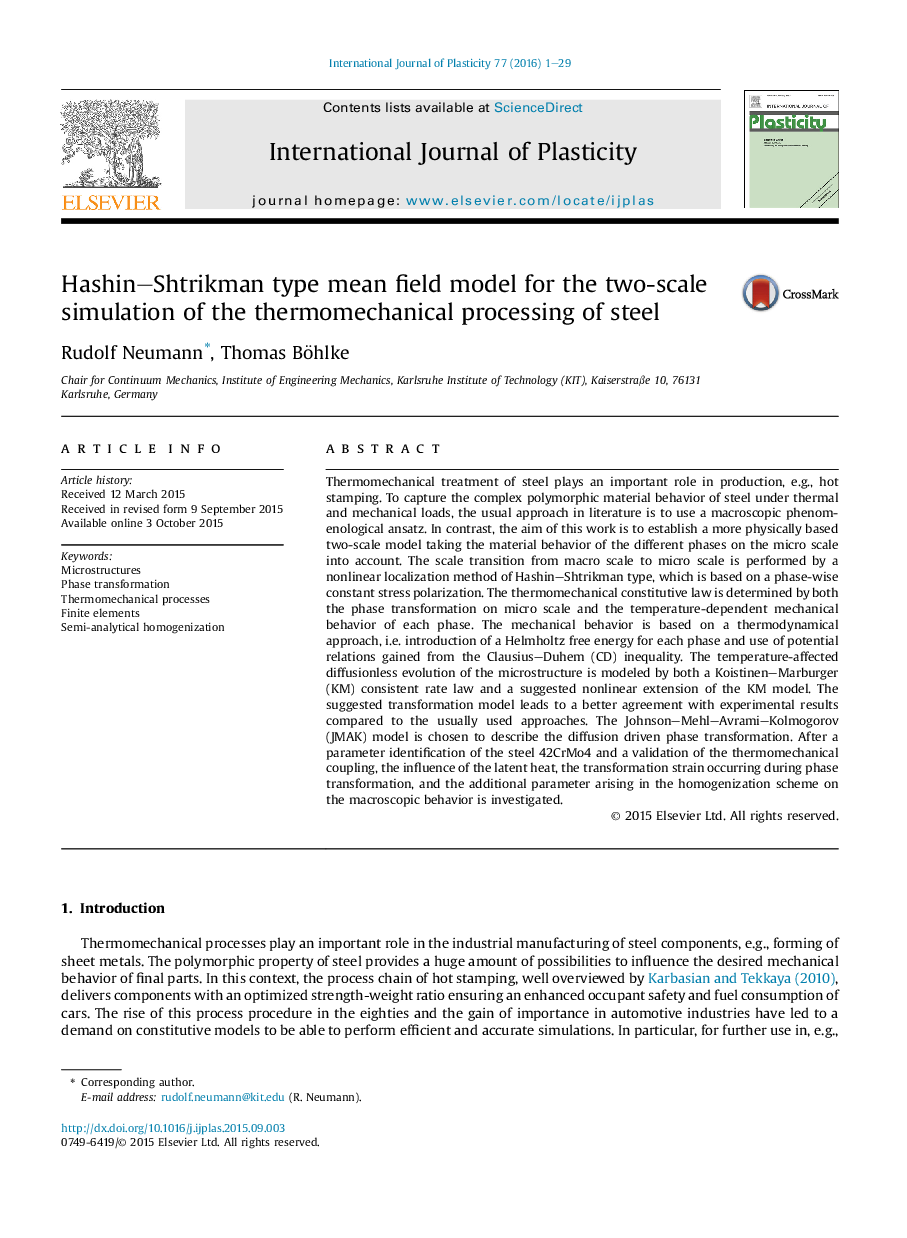| Article ID | Journal | Published Year | Pages | File Type |
|---|---|---|---|---|
| 7174935 | International Journal of Plasticity | 2016 | 29 Pages |
Abstract
Thermomechanical treatment of steel plays an important role in production, e.g., hot stamping. To capture the complex polymorphic material behavior of steel under thermal and mechanical loads, the usual approach in literature is to use a macroscopic phenomenological ansatz. In contrast, the aim of this work is to establish a more physically based two-scale model taking the material behavior of the different phases on the micro scale into account. The scale transition from macro scale to micro scale is performed by a nonlinear localization method of Hashin-Shtrikman type, which is based on a phase-wise constant stress polarization. The thermomechanical constitutive law is determined by both the phase transformation on micro scale and the temperature-dependent mechanical behavior of each phase. The mechanical behavior is based on a thermodynamical approach, i.e. introduction of a Helmholtz free energy for each phase and use of potential relations gained from the Clausius-Duhem (CD) inequality. The temperature-affected diffusionless evolution of the microstructure is modeled by both a Koistinen-Marburger (KM) consistent rate law and a suggested nonlinear extension of the KM model. The suggested transformation model leads to a better agreement with experimental results compared to the usually used approaches. The Johnson-Mehl-Avrami-Kolmogorov (JMAK) model is chosen to describe the diffusion driven phase transformation. After a parameter identification of the steel 42CrMo4 and a validation of the thermomechanical coupling, the influence of the latent heat, the transformation strain occurring during phase transformation, and the additional parameter arising in the homogenization scheme on the macroscopic behavior is investigated.
Related Topics
Physical Sciences and Engineering
Engineering
Mechanical Engineering
Authors
Rudolf Neumann, Thomas Böhlke,
